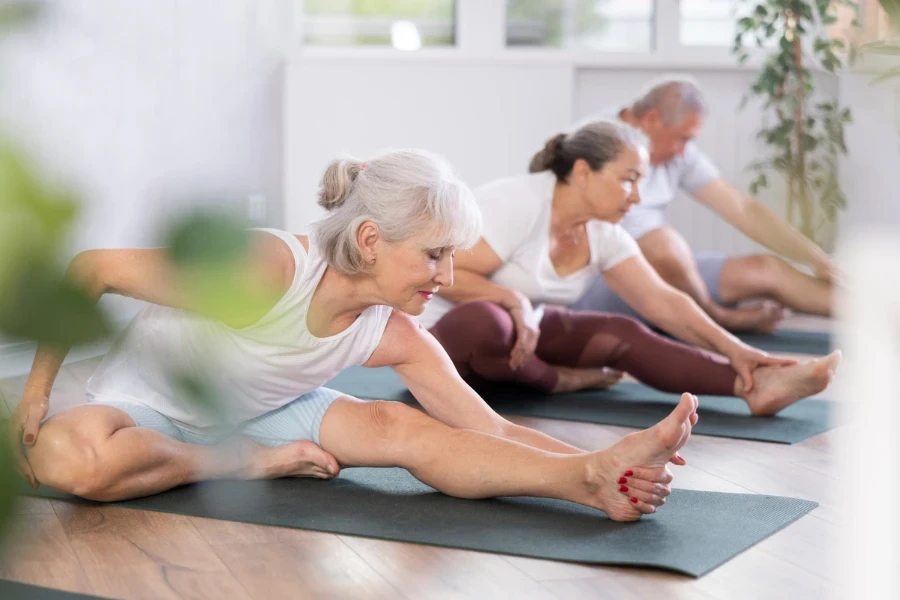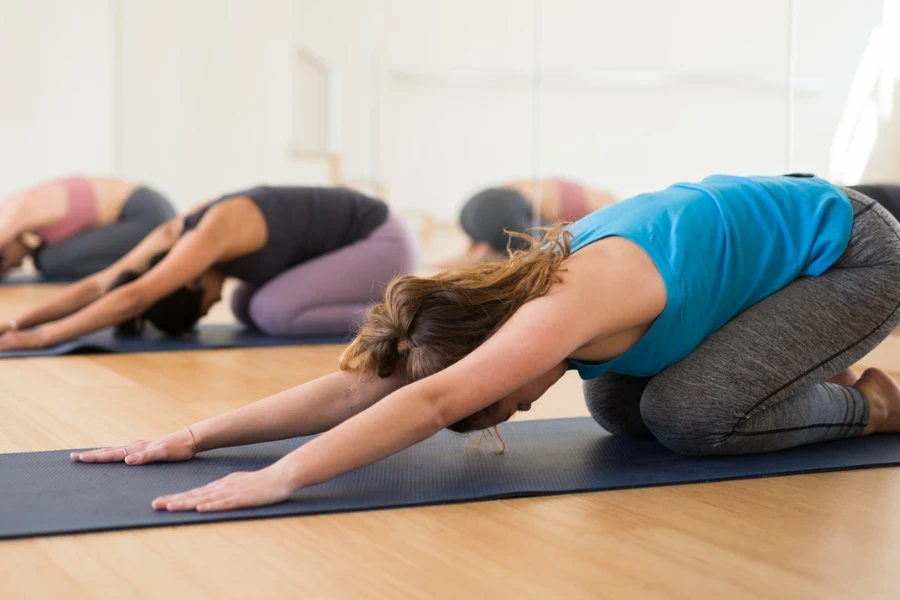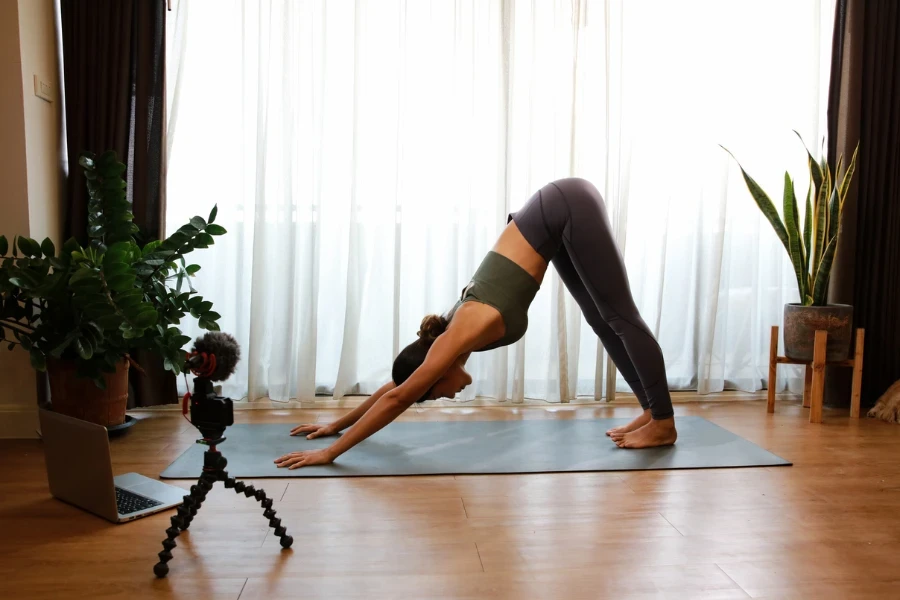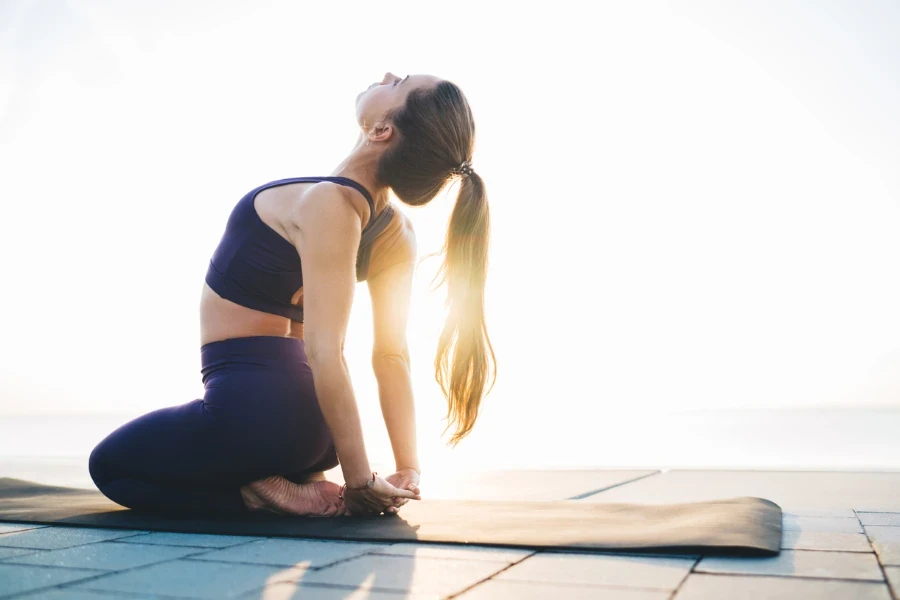Although yoga is an ancient system for integrating the body, mind, and spirit, asana yoga is arguably its most well-known aspect. The physical postures of asana yoga are intended to purify the body and provide the strength and stamina needed to endure the hours of meditation required for spiritual enlightenment. In this guide, we’ll cover what asana yoga is, why it’s gaining so much popularity, and how it can change your life. It’s a good idea to understand a bit about asana yoga, whether you’re an elite athlete or trying out yoga for the first time.
Table of Contents:
– What is asana yoga?
– The popularity of asana yoga
– Is asana yoga good for you?
– How to choose the right asana yoga practices
– How to use asana yoga effectively
What is asana yoga?

Asana yoga is the practice of going into postures, a pillar of yoga, which is an ancient universal system that originated in India thousands of years ago. The word asana literally means ‘seat’ or ‘posture’ and it is used to prepare the body to meditate, by creating optimal levels of strength, suppleness and balance. Asana yoga differs from purely physical exercise in that it seeks holistic homeostatic balance of mind, body and spirit. Generally, asana yoga is a system of stretches and postures, ranging from the simple to the quite complex and physically demanding.
Asana yoga flows from a philosophical understanding that the body is the temple of the spirit: in order to develop the spirit and live healthy, happy and compassionate lives, we must care for the body. Asana yoga practices are performed with the aim of purifying and inspiring the spirit that lives within the physical frame. Every pose allegedly brings one closer to a state of inner peace, mental clarity, vitality and emotional stability. Asana yoga promotes mindfulness and presence: practitioners are encouraged to pay close attention to their breath as well as their body sensations, which brings about a meditative state of awareness.
Being indifferentiated, it can be offered at any level of fitness and can be made relatively easy or challenging to accommodate the particular needs of any individual. Hence, it can be offered to a wide audience, ranging from athletes who seek to improve their performance and also reduce the risk of injury to those who seek a gentler form of exercise to improve their general health and reduce stress. It also improves health on the mental plane as it reduces depression and anxiety.
The popularity of asana yoga

The popularity of asana yoga has risen dramatically over the past two decades and in many ways the world is certainly a better place for that. Its rise has been largely due to its versatility and the growing awareness of its health benefits. Today, more and more people are looking for an integrated holistic way of taking care of our body-mind and spirit. Asana yoga has attracted practitioners of all ages, from all walks of life, from those who want to relieve stress from the daily grind of work, to professional athletes seeking peak performance, to individuals who require some form of physical rehabilitation from an injury.
Asana-based yoga has become so universally accessible in the digital era, via YouTube and the like, that it has contributed to the wider-scale ‘yoga-islation’ of Western culture. In turn, the growth of yoga’s prevalence as a physical fitness regime, therapy and self-help system has also created its own momentum. The many sound and picture-bite testimonials of yoga’s life-transforming powers have undoubtedly accelerated this process. Courtesy the images of physical grace and achievement created by so many avid yoga practitioners, it now appears to be a trendy and even glamorous means of staying in shape and alleviating the pressures of everyday life.
Celebrity endorsements and asana yoga’s inclusion in the wellness offerings of gyms and health clubs has only served to anchor it more firmly in the cultural mainstream. Furthermore, as scientific studies demonstrate that yoga can help to reduce stress, improve cardiovascular function, increase flexibility and strength, the practice of asana yoga is becoming a welcome fixture in many people’s daily fitness regimen.
Is asana yoga good for you?

The physical and mental health benefits of asana yoga are well-established and numerous. On the physical level, asana yoga improves flexibility, strengthens and tones the musculoskeletal system, increases balance and body awareness, and improves posture. All of these benefits decrease the risk of injury and can also reduce the effects of chronic pain (eg, lower back pain). Asana yoga also stimulates the circulatory and respiratory systems, enhancing cardiovascular health and leading to increased oxygenation of the body.
The calming impact of asana yoga at the mental and emotional level is due to the effect of the meditation and breathing practices that are essential to yoga, which call for mindfulness and lead to a heightened sense of awareness and concentration. This, in turn, helps counter stress and anxiety and improves cognitive functions as well as emotional resilience. Practitioners often find that they are better able to quiet their minds, experience a greater sense of inner peace, and enjoy a reduction in symptoms of depression, as well as an increased sense of optimism and enjoyment of life.
Besides, asana yoga fosters self-care and a general healthy lifestyle. Those who practise often become more mindful not only of their physical movements and postures but also of how their nutrition, sleep patterns and other lifestyle choices affect their practice and wellbeing. Asana yoga practices also cultivate stronger sense of belonging, as many find support and camaraderie in their yoga classes and groups. Overall, asana yoga is an excellent option to improve health of mind, body and spirit.
How to choose the right asana yoga practices

If you choose to do asana yoga, you must select the right type and structure to help you achieve the outcome you desire. While you can practise alone, joining a beginner’s class or learning from a certified yoga teacher provides the structure and guidance to help you understand the poses and safely get into them. When you’re a beginner, you should start with easy poses and move on to more advanced poses.
But it is also about listening to your body, honouring its limits, and not doing more than you are able to do within that moment. Yoga is a practice of competition with yourself, not with others. Choose practices that challenge you but not cause you pain – or, at least, don’t go any further than that pain. As you become more comfortable with the basics, try other styles of yoga, and find the one that best suits your needs. You can discover ways of moving that are both challenging and introspective, such as Hatha (the traditional way of yoga) or Ashtanga (dynamic and physically challenging), or practices that are more restful and less demanding, such as Restorative yoga.
For example, if you are choosing asana yoga practices to improve flexibility, choose a sequence with a lot of stretchintoned poses that allow your muscles to open and lengthen. If you are choosing asana yoga to build strength, consider incorporating postures in which a large portion of your body weight is supported by your muscles, like arm balances and inversions such as Downward Facing Dog and Handstand. If you are choosing asana yoga to relieve stress, choose a practice that incorporates breathing and meditation. Remember, the purpose of asana yoga is not to become a master at the shapes, but rather to cultivate an awareness of your body and your mind.
How to use asana yoga effectively

Fifth, for the benefits of asana yoga to be truly felt, we need to be regular in our practice. A little bit every day will go a very long way in transforming our physical and mental wellbeing. Set a dedicated space for your practice, without distractions, and use aids – such as a yoga mat, blocks and strap – to gently support your body.
Use a variety of poses to make sure you get good balance in your practice and stretch and strengthen different parts of your body. Make sure you are also using your breath to guide your movements and to deepen your poses. Breathwork is a central part of asana yoga, used to unite mind and body, to help us experience less stress and better focus.
Secondly, approach your practice with patience and self-compassion. Yogic progress is not linear, and each day is a different day. Celebrate your abilities, regardless of their level, and turn challenges into opportunities for growth. Remember that the journey of asana yoga is as important as the destination.
Conclusion:
It has also become popular because it is available to nearly everyone, suitable for all ages, and offers deep, positive benefits for the body, mind, and spirit. It is also customisable. If you are overweight, doing your part to reduce obesity in the population, you might prioritise asana to burn calories. Or you might focus on breathing and the deep relaxation that releases stress from the body. If you are a caregiver, you might be looking for a few minutes of exercise, or maybe you are in recovery from an injury or illness, and your focus is on rebuilding strength and coordination. Maybe you’re suffering from insomnia and you want to quiet your mind before bed. A parent serving as a natural role model might be looking for ways to share the benefits of asana with their children. Whatever place you find yourself in life, you can learn asana, no matter who you are, no matter where you are, and you can create a practice that meets your individual needs while benefitting the whole of society.




